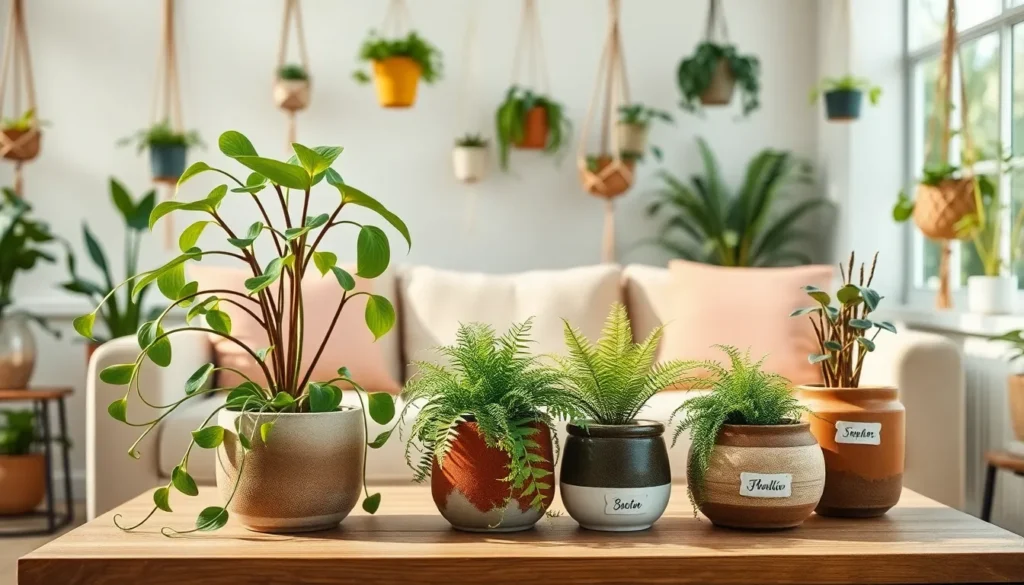Welcoming plants into your home not only breathes life into your living space but also creates a serene and nurturing environment for you and your furry companions. Yet, for many pet-loving gardeners, the quest to find beautiful greenery that is safe for pets can feel overwhelming and fraught with uncertainty.
Whether you’ve just begun your gardening journey or you’re a seasoned green thumb, choosing pet-safe plants is essential to harmonize your love for both plants and animals. This guide is designed to provide you with a curated list of 11 exquisite plants that promise to enhance your home without compromising the safety of your beloved pets.
Throughout this article, we’ll explore a variety of plants that are not only visually stunning but also non-toxic to your four-legged friends. You’ll discover practical tips on how to care for these plants, ensuring they thrive alongside your pets, creating a lush oasis that everyone in your household can enjoy.
Understanding Pet-Safe Plant Benefits
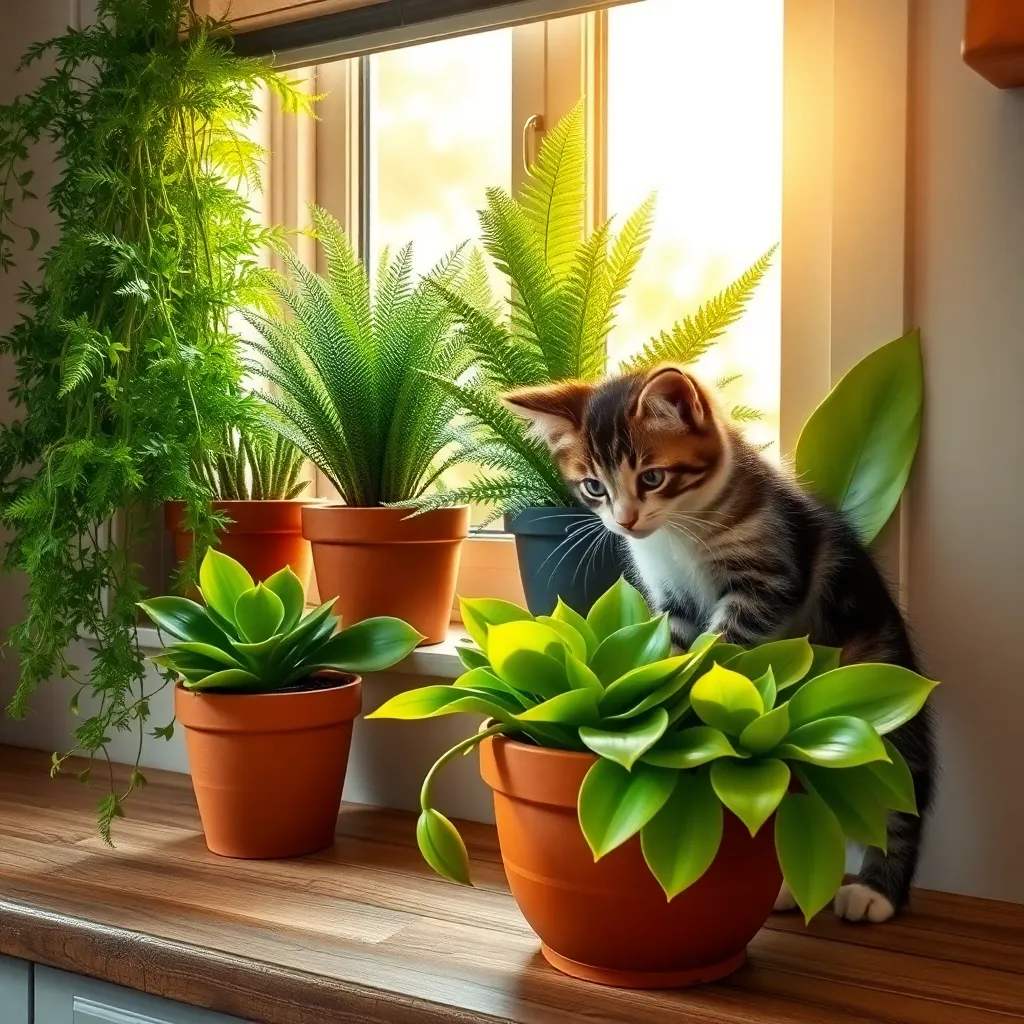
Pet-safe plants not only enhance the beauty of your home but also ensure the safety of your furry friends. Choosing plants like the spider plant or Boston fern can add greenery to your space without the worry of toxicity.
These plants thrive in a variety of conditions, making them perfect for both beginners and experienced gardeners. For instance, the spider plant is highly adaptable and can flourish in indirect sunlight and a variety of soil types, including potting mix with good drainage.
Water your spider plants every 1-2 weeks, allowing the soil to dry out between waterings to prevent root rot. If you’re looking for a hanging plant, the Boston fern is an excellent choice, requiring moderate to high humidity levels and indirect sunlight.
Maintain the Boston fern’s lush foliage by misting it regularly and using a peat-based potting mix to retain moisture. For those seeking more advanced care techniques, consider using a humidity tray or a small humidifier to enhance the environment for humidity-loving plants.
Choosing Non-Toxic Greenery Wisely
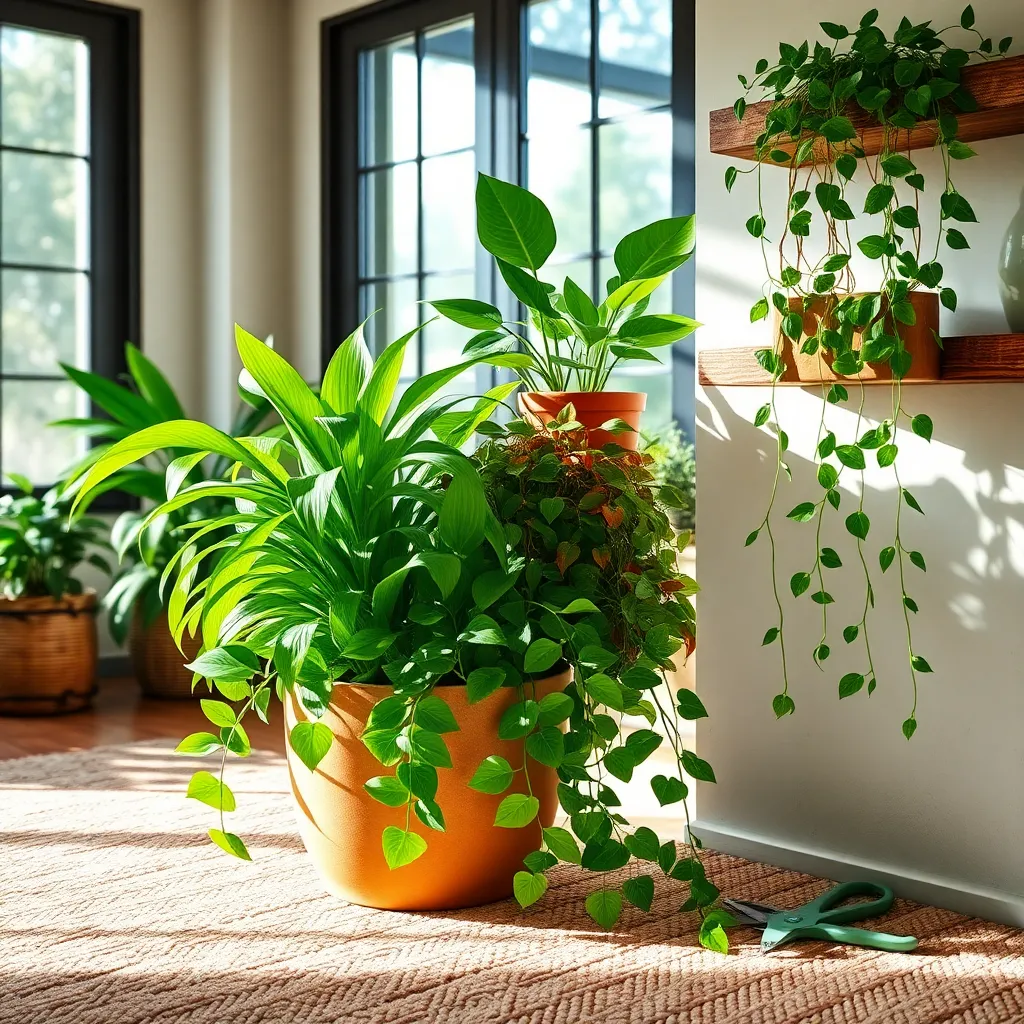
When selecting non-toxic greenery for your home, consider plants that are both safe for pets and easy to maintain. Spider plants, for instance, are an excellent choice as they thrive in indirect sunlight and require watering only when the top inch of soil is dry.
For those seeking a splash of color, Calatheas offer vibrant foliage without the worry of toxicity to your furry friends. Ensure they are placed in a spot with medium to low indirect light and maintain humidity by misting regularly or using a humidity tray.
Another pet-safe option is the Bamboo Palm, which adds a tropical feel to your indoor space. These plants prefer bright, indirect light and should be watered when the topsoil feels dry to the touch, making them relatively low maintenance.
Advanced gardeners might consider incorporating the Areca Palm, known for its air-purifying qualities. These palms require a bit more attention, thriving in well-draining potting soil and needing regular fertilization during the growing season for optimal health.
Calming Aloe Vera for Pets
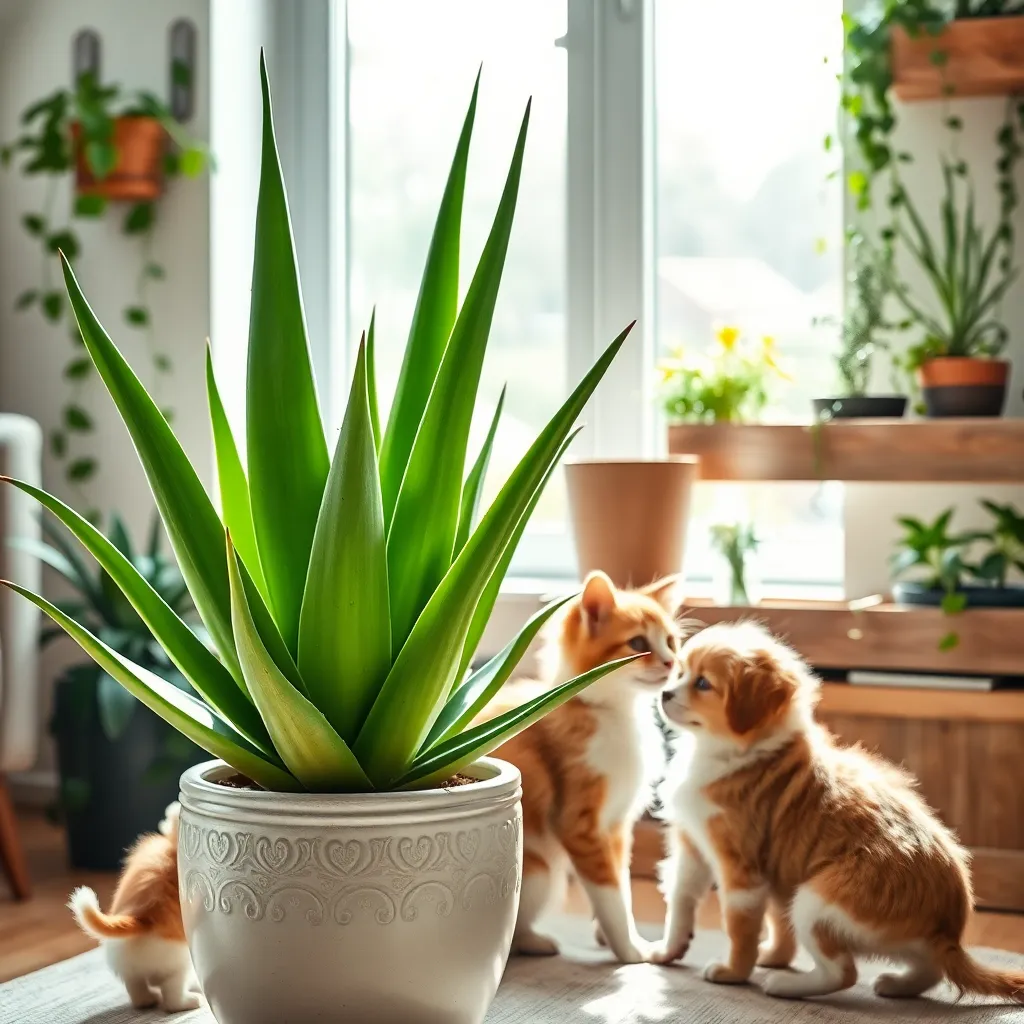
Aloe Vera is a fantastic choice for pet owners looking to add a calming touch to their home. This succulent is non-toxic to cats and dogs, making it a safe addition to your indoor plant collection.
To thrive, Aloe Vera requires a bright, sunny location and well-draining soil. Use a cactus mix or combine regular potting soil with sand to ensure optimal drainage.
Watering Aloe Vera is simple, as it prefers to dry out between waterings. Aim to water once every three weeks or when the soil feels completely dry to the touch.
For those looking to enhance growth, consider using a diluted succulent fertilizer during the growing season. This can provide the extra nutrients Aloe Vera needs without overwhelming it.
Spider Plant: A Hardy Choice
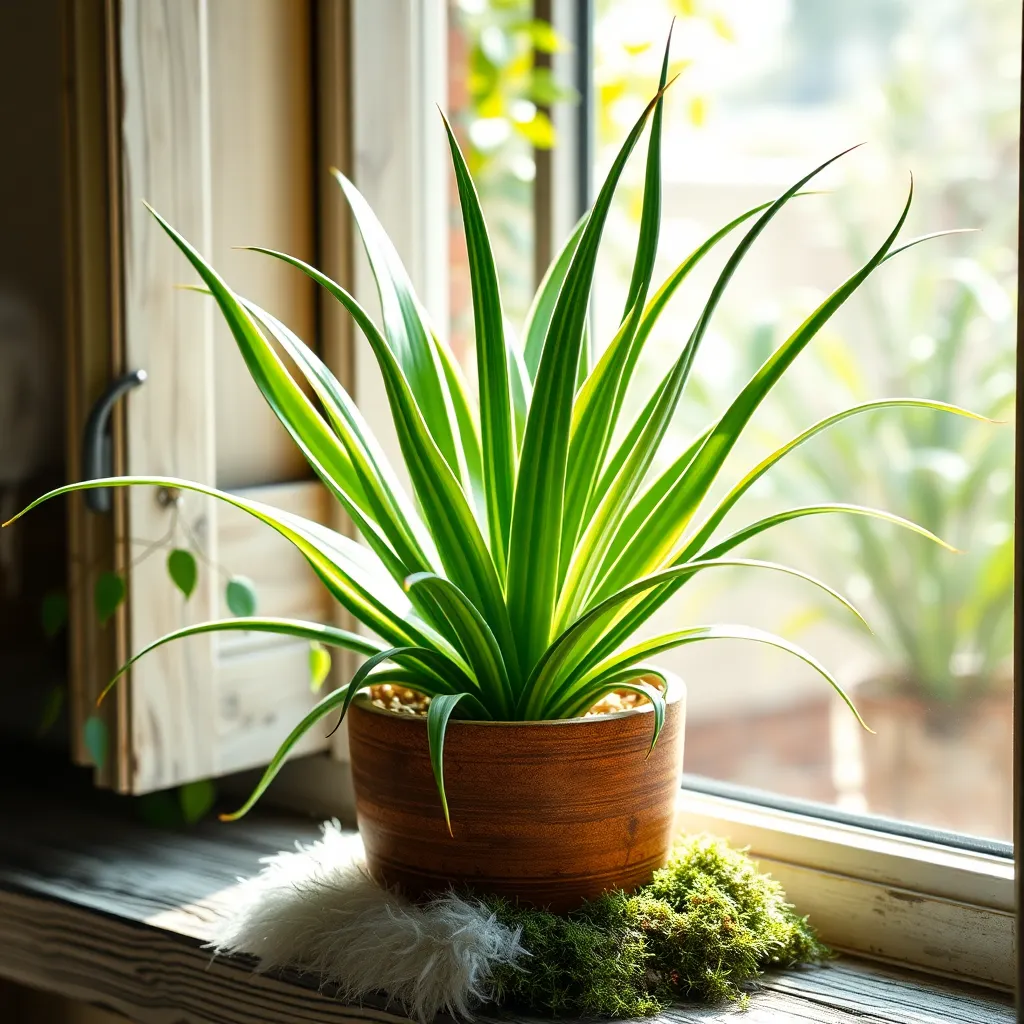
Spider plants are a hardy choice for anyone looking to add a touch of greenery to their home while keeping pets safe. Known for their long, arching leaves and ability to thrive in various conditions, spider plants are both attractive and low-maintenance.
To ensure your spider plant flourishes, place it in a spot with indirect sunlight. While they can adapt to a variety of light conditions, too much direct sunlight can scorch their leaves.
Watering a spider plant is straightforward; simply allow the top inch of soil to dry out between waterings. Overwatering can lead to root rot, so it’s important to avoid letting the plant sit in water.
For optimal growth, spider plants prefer a well-draining potting mix. You can enhance the soil with a mix of peat or perlite to improve drainage and aeration.
Beginners will appreciate that spider plants are forgiving, even if you forget to water them occasionally. For more advanced gardeners, try propagating spider plant babies by placing them in water or directly into soil.
Ferns: Lush and Pet-Friendly
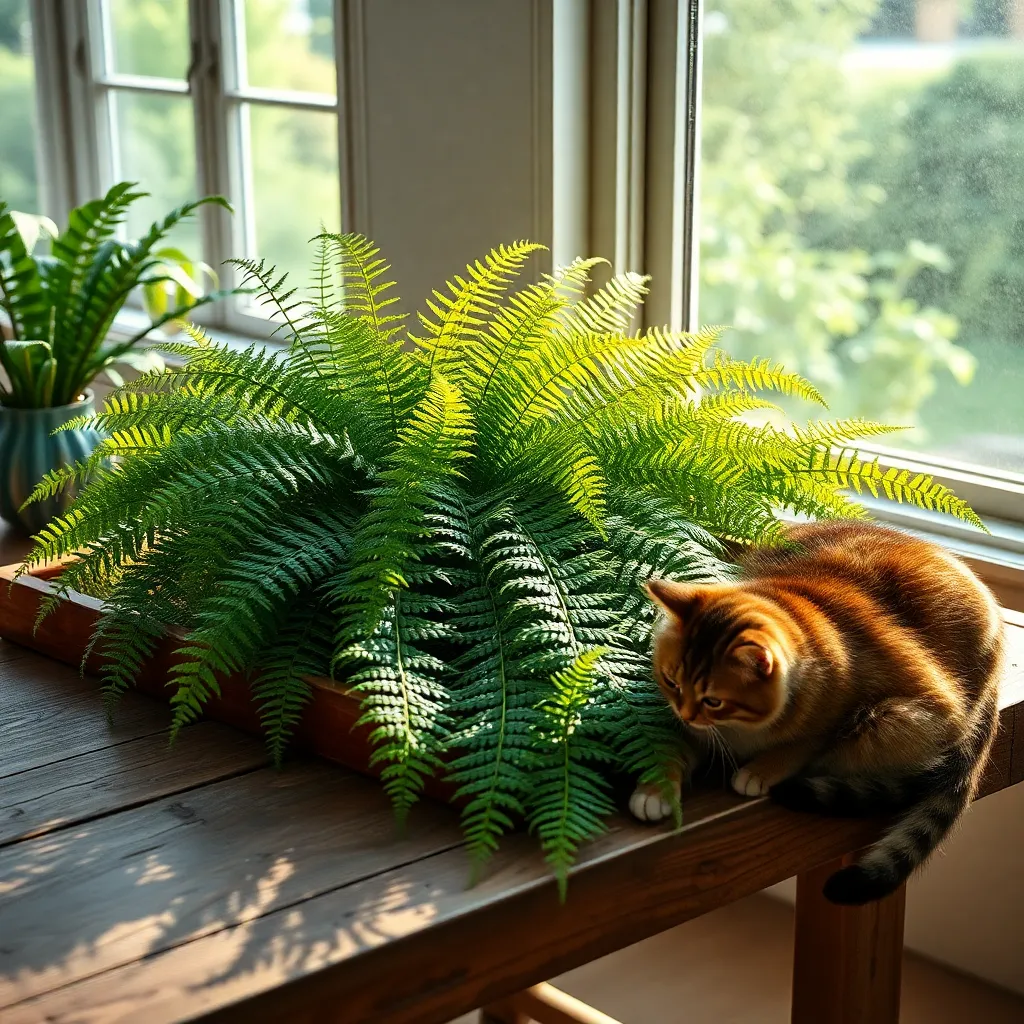
Ferns are a fantastic choice for those seeking lush greenery that’s also safe for pets. These plants thrive in indirect light, making them perfect for spaces with filtered sunlight or even low-light conditions.
When caring for ferns, maintain a consistent watering schedule to keep their soil moist but not soggy. Use a well-draining potting mix, ideally one that retains some moisture, like a peat-based blend, to support their growth.
Pay attention to humidity levels, as ferns love a moist environment. Placing a small humidifier nearby or misting the leaves regularly can help recreate their natural habitat, enhancing their lush appearance.
Advanced gardeners might consider propagating ferns by division, especially in spring when growth is vigorous. Ensure each divided section has a healthy root system and enough foliage to thrive independently.
Majestic Bamboo Palm Insights
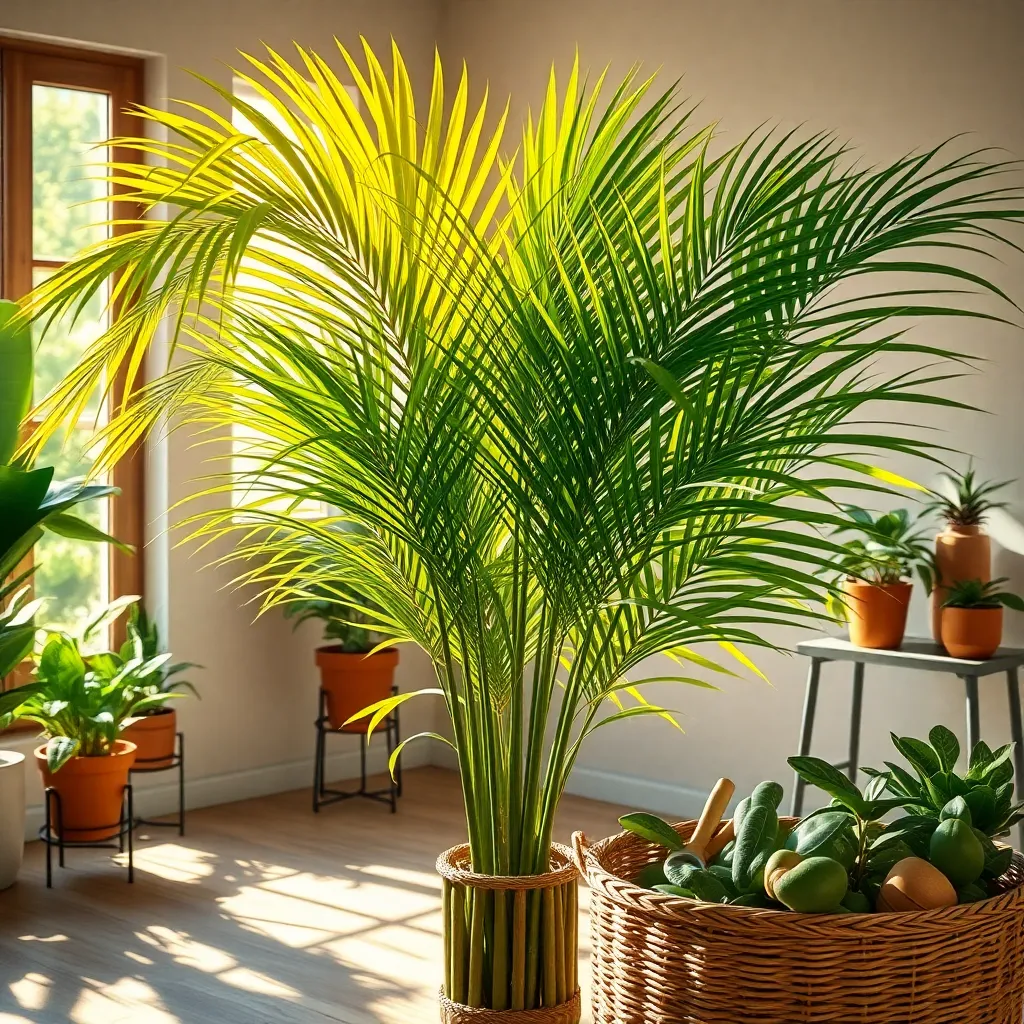
The bamboo palm, known for its elegant fronds, is a fantastic choice for pet-friendly homes. Not only does it add a tropical touch, but it also thrives indoors with minimal fuss.
To ensure your bamboo palm flourishes, place it in an area with bright, indirect light. Direct sunlight can scorch the leaves, so a spot near a north or east-facing window is ideal.
Watering this plant is straightforward: keep the soil consistently moist but not soggy. It’s best to use well-draining soil, such as a mix of peat and perlite, to prevent root rot.
For advanced gardeners looking to boost growth, consider fertilizing your bamboo palm every month during the growing season with a balanced, water-soluble fertilizer. Regularly wipe the leaves with a damp cloth to keep them dust-free, ensuring optimal photosynthesis.
African Violets: A Colorful Option
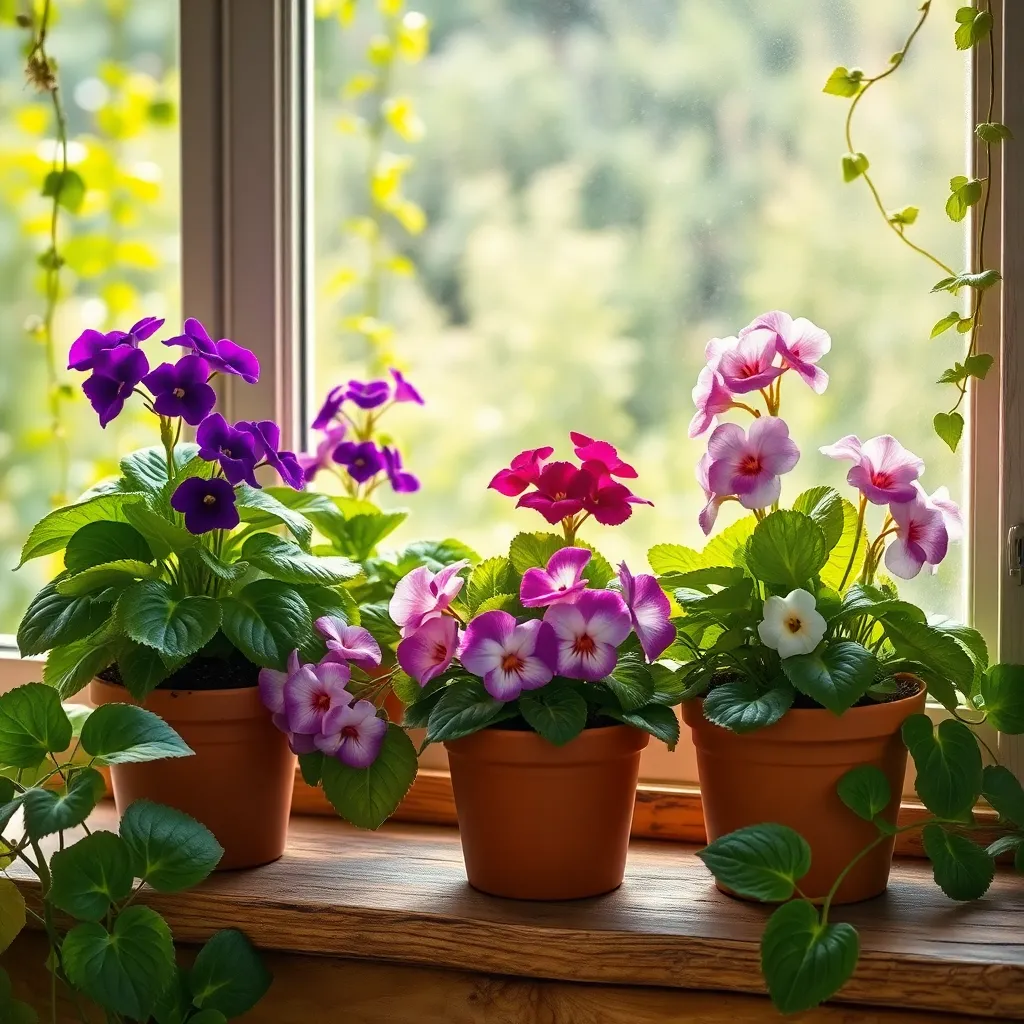
African violets are a vibrant and pet-safe option that can add a splash of color to any indoor space. These delightful plants thrive indoors, making them perfect for those who lack outdoor gardening space but still want to enjoy beautiful blooms.
To keep your African violets healthy, place them in a spot where they receive bright, indirect light. Direct sunlight can harm their leaves, so a north or east-facing window is ideal for these delicate beauties.
Use a well-draining potting mix, such as one specifically formulated for African violets, to ensure optimal growth. Proper drainage is crucial to prevent root rot, which can occur if the soil becomes too waterlogged.
Water African violets when the top of the soil feels dry to the touch, but avoid getting water on the leaves to prevent unsightly spots. Bottom watering is an effective technique—simply place the pot in a shallow dish of water until the soil is moist.
Areca Palm’s Safe Appeal
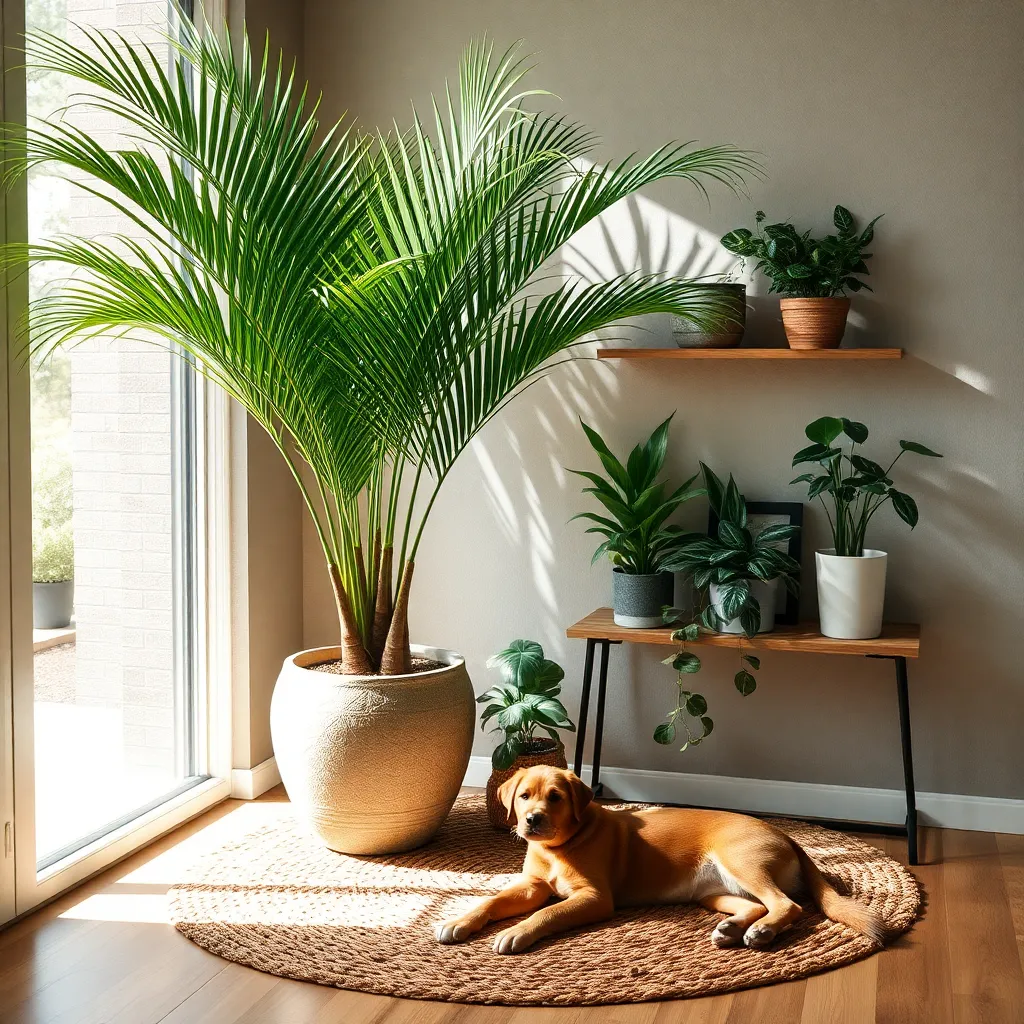
The Areca Palm is a wonderful addition to any home seeking a tropical touch while ensuring pet safety. Known for its lush, feathery fronds, this plant is non-toxic to both cats and dogs, making it an ideal choice for pet owners.
When it comes to care, Areca Palms thrive in bright, indirect light, which helps them maintain their vibrant green appearance. It’s important to use a well-draining potting mix, such as a peat-based soil, to prevent root rot and ensure healthy growth.
Watering is key to keeping your Areca Palm happy, so aim to keep the soil consistently moist but not soggy. A practical tip for beginners is to water when the top inch of soil feels dry, which usually translates to watering every 1-2 weeks depending on your climate.
For those looking to take their palm’s care to the next level, consider misting the leaves regularly to increase humidity, as Areca Palms love a humid environment. Additionally, feeding them with a balanced liquid fertilizer every month during the growing season can promote lush growth and vibrant foliage.
Boston Fern: Classic and Safe
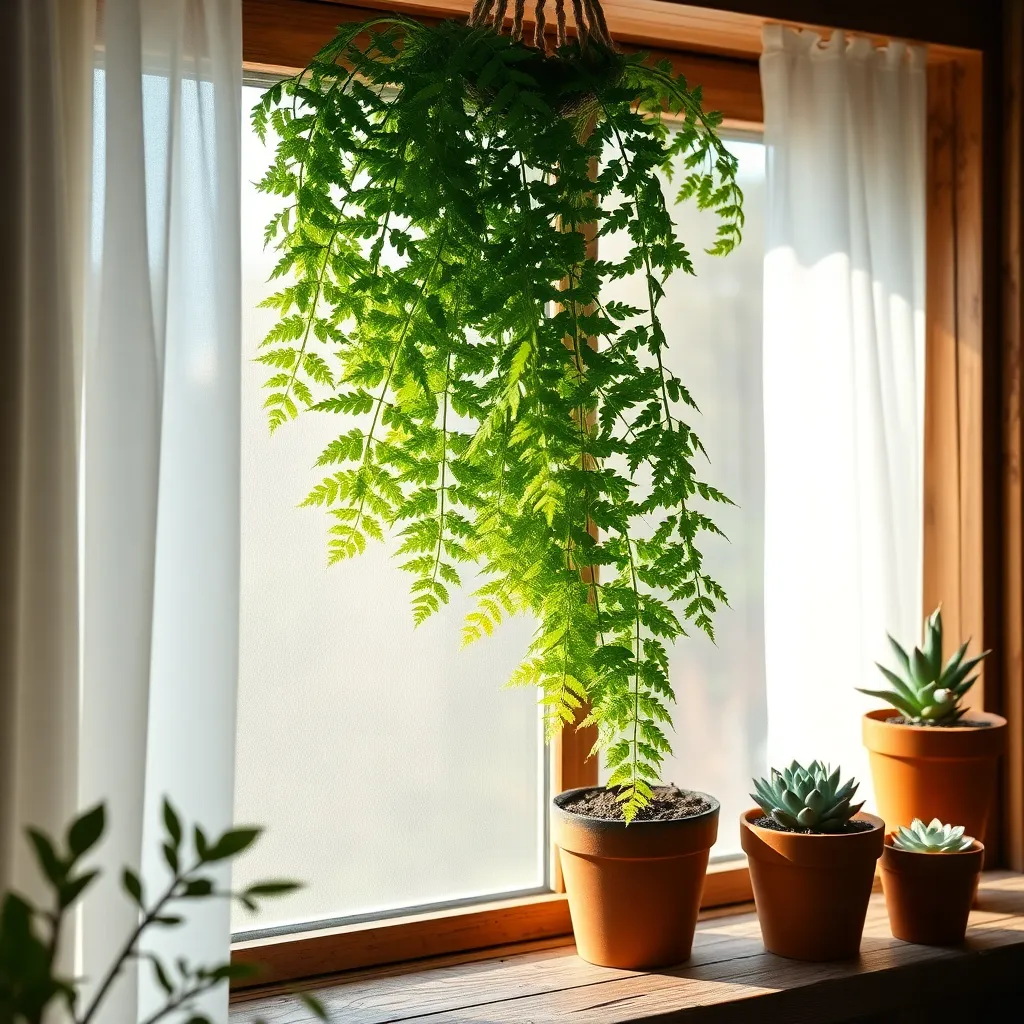
The Boston Fern is a classic choice for any home, offering both aesthetic beauty and pet safety. Known for its lush, feathery fronds, this plant thrives in indirect light, making it perfect for hanging baskets in shaded areas.
To ensure your Boston Fern remains vibrant, maintain a consistent watering schedule, keeping the soil moist but not waterlogged. Providing high humidity is crucial, so placing the plant on a tray of pebbles and water can be beneficial.
Using a well-draining potting mix rich in organic matter will support healthy root development. For optimal growth, consider a potting mix with a combination of peat moss, pine bark, and perlite.
Advanced gardeners can periodically mist the foliage to mimic the fern’s natural habitat, enhancing humidity levels. Additionally, fertilize sparingly with a balanced liquid fertilizer during the growing season to promote lush growth without overwhelming the plant.
Succulents: A Pet-Safe Variety
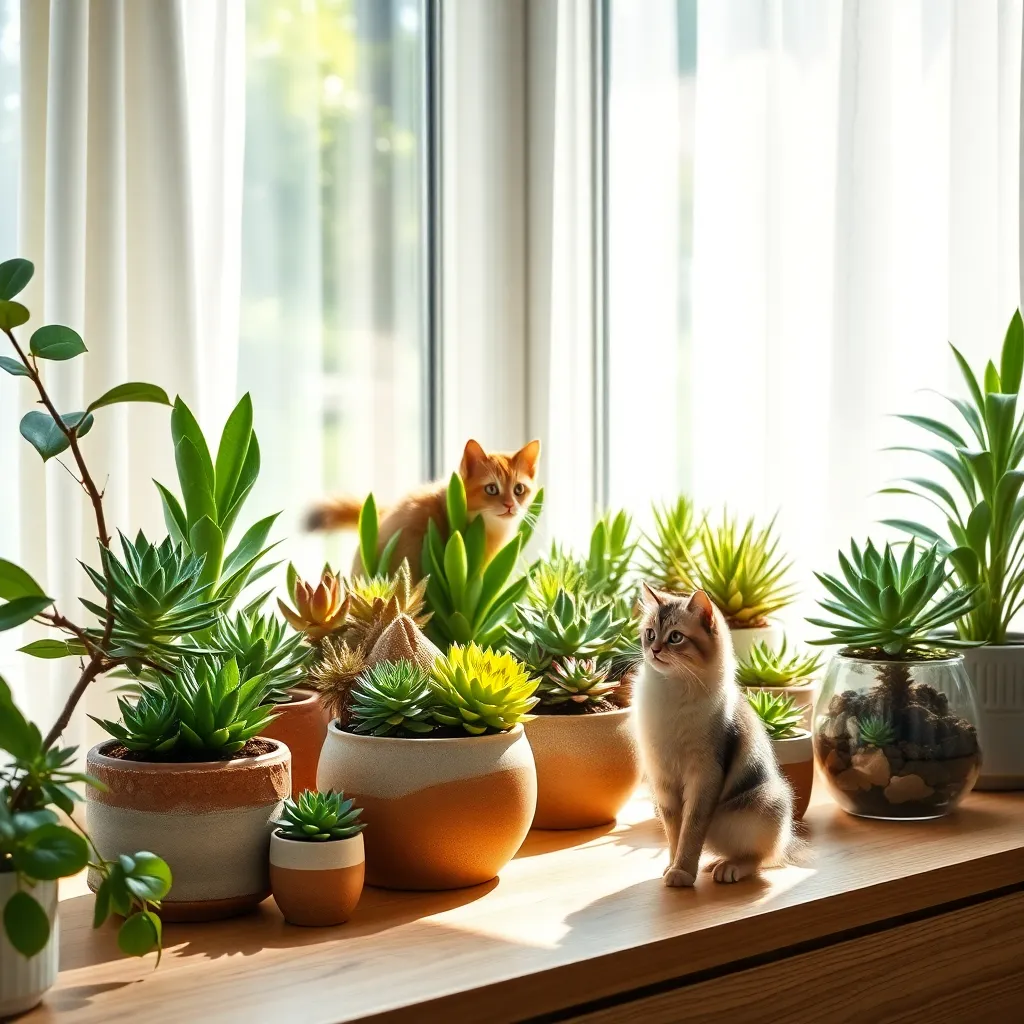
Succulents are an excellent choice for pet-safe plants, combining aesthetic appeal with minimal risk. Many varieties, such as Haworthia and Echeveria, are non-toxic to cats and dogs, making them a safe addition to any pet-friendly home.
These hardy plants thrive in bright, indirect light and prefer well-draining soil. Consider using a cactus soil mix, which ensures proper drainage and helps prevent root rot, a common issue with succulents.
Watering succulents requires a light touch, as overwatering can be detrimental. It’s best to water them deeply but infrequently, allowing the soil to dry out completely between waterings, usually every 2-3 weeks depending on humidity and light conditions.
For more advanced care, consider the benefits of repotting your succulents every couple of years. This encourages healthy growth and allows you to refresh the soil, providing fresh nutrients and improving drainage.
Creating a Pet-Friendly Environment
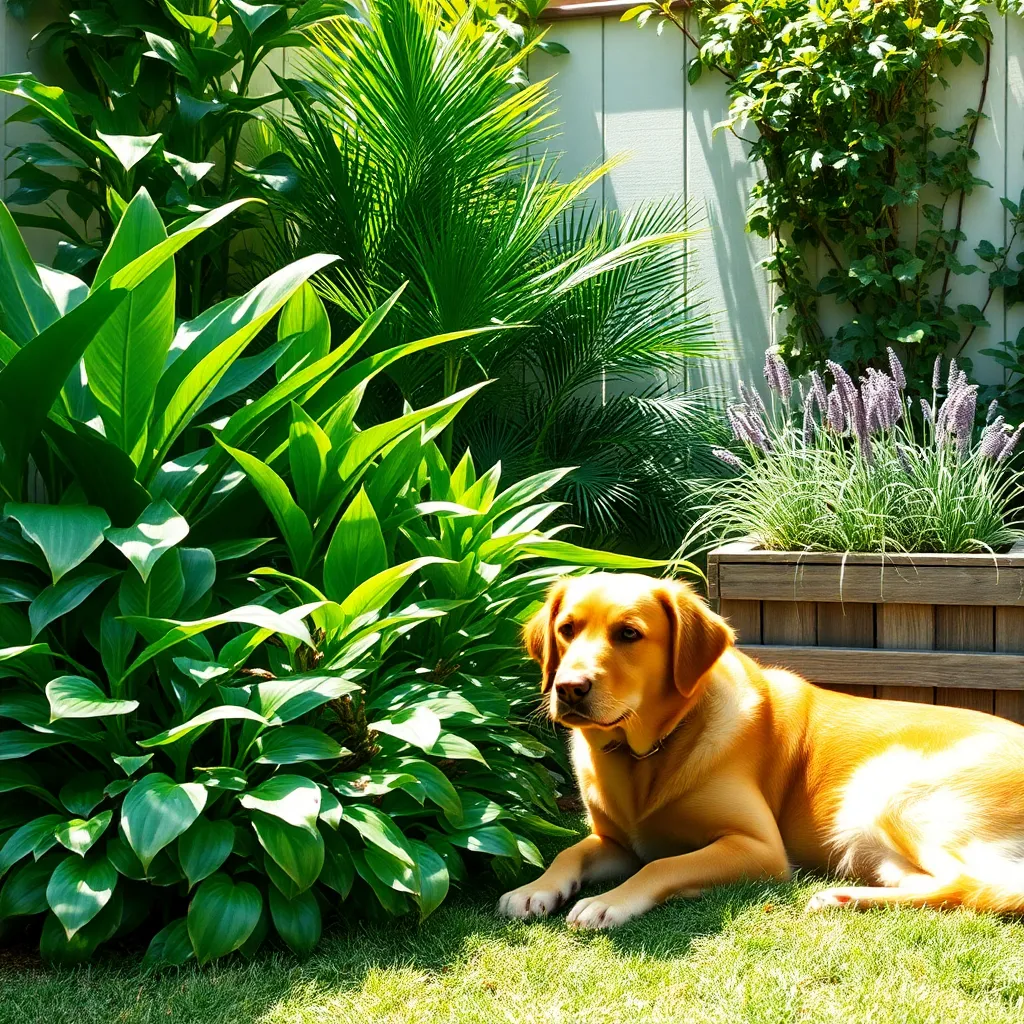
Creating a pet-friendly garden environment is an essential consideration for plant-loving pet owners. Ensuring that your garden is a safe haven for both your plants and your pets can be achieved by selecting non-toxic plants and using pet-safe gardening practices.
Start by choosing plants that are known to be non-toxic to pets, such as calatheas, polka dot plants, and spider plants. These varieties not only add beauty to your space but also eliminate the worry of accidental ingestion by your furry friends.
Incorporate physical barriers, like decorative fencing or raised beds, to keep curious paws away from delicate plants. This strategy not only protects your plants but creates distinct areas in the garden, giving pets their own space to explore safely.
When it comes to soil, opt for natural, organic options that do not contain harmful chemicals. In addition, using mulch made from untreated wood can deter pets from digging while maintaining soil moisture and health.
Watering techniques should also be considered to maintain a pet-safe garden. Drip irrigation systems can be a practical choice, minimizing water exposure on plant surfaces and reducing the risk of mold and mildew, which can be harmful to pets if ingested.
Finally, regular maintenance, such as trimming and removing any dead or decaying plant matter, helps prevent mold growth and keeps your garden healthy. This practice not only ensures a vibrant garden but also minimizes potential hazards for your pets.
Conclusion: Growing Success with These Plants
In navigating the nurturing landscape of relationships, embracing nature’s touch can bring both serenity and safety into your home. We’ve explored 11 brilliant pet-safe plants that not only enhance your living space but also symbolize essential relationship concepts: trust, growth, adaptability, protection, balance, harmony, resilience, communication, patience, commitment, and nurturing. Each plant reflects a vital element of healthy relationships, reminding us to cultivate these qualities daily.
As an actionable step, why not start by introducing one or two of these plants into your home today? This simple act can initiate a ripple effect, enhancing both your personal environment and your relational dynamics. Let these green companions serve as living reminders of the values that fortify connections with loved ones.
Remember, the journey to relationship success is ongoing and enriched by continual learning and reflection. Bookmark this article as a handy reference, ensuring that these insights are always within reach. As you nurture these plants and your relationships, look forward to a future filled with growth, understanding, and profound connection. Empower yourself to thrive in every relational endeavor, knowing that cultivating a loving environment is a step towards enduring happiness and fulfillment.

